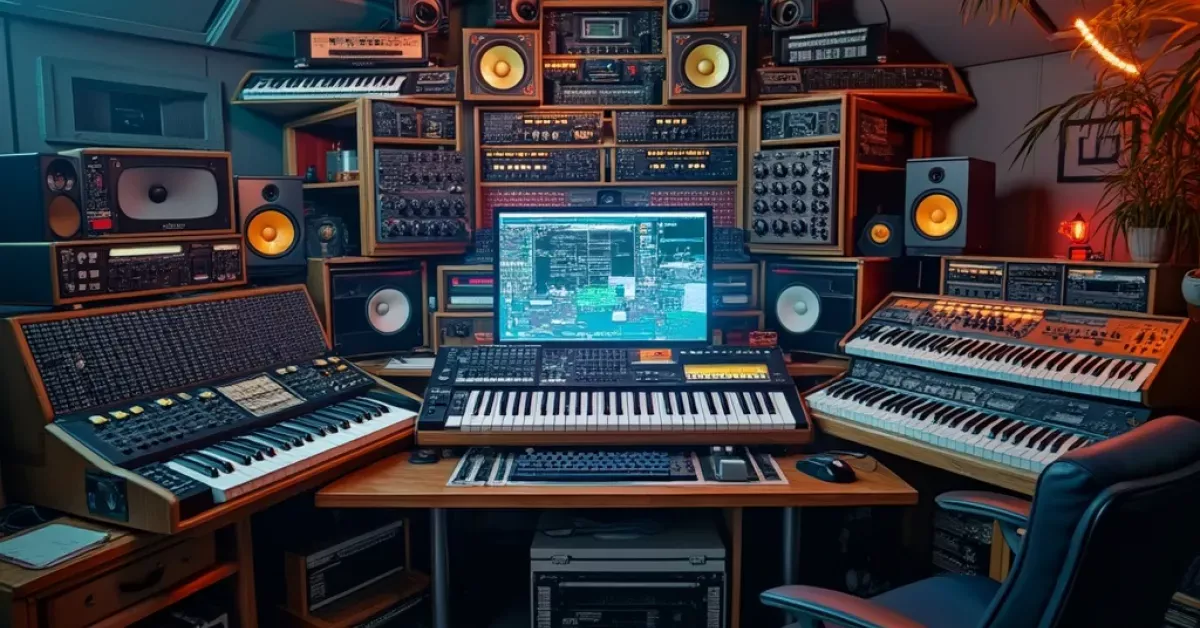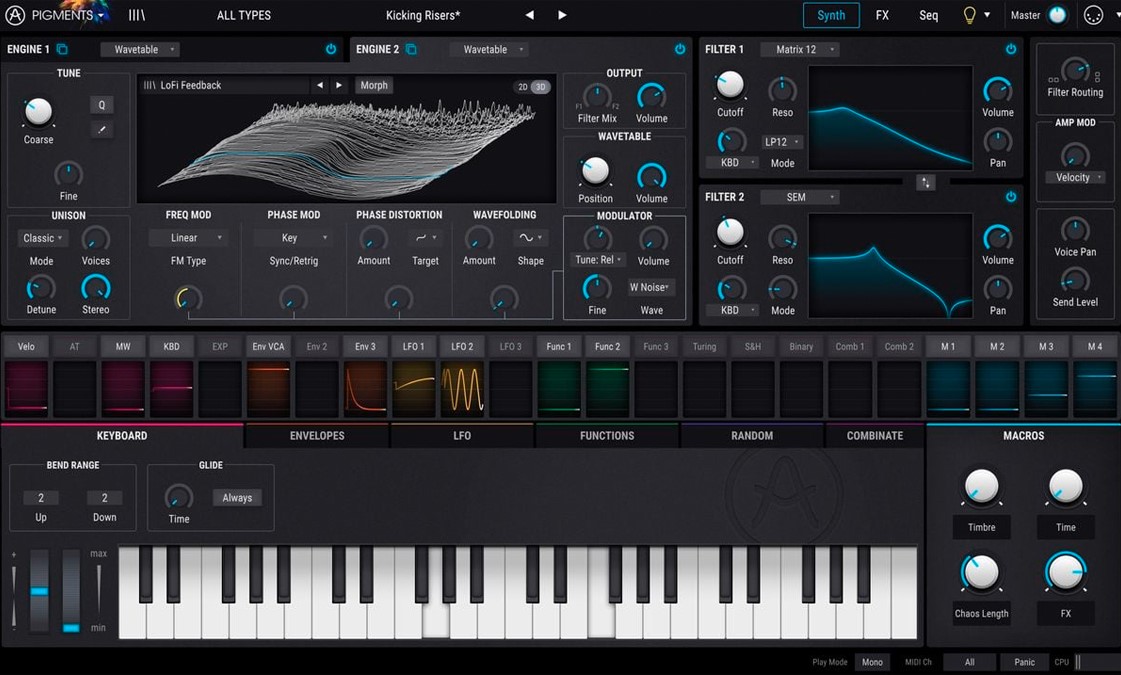MIDI FX are the secret sauce behind countless hit records and innovative tracks across every genre. Whether you’re producing electronic dance music, orchestrating cinematic scores, or laying down hip-hop beats, MIDI effects can transform your workflow, spark creativity, and elevate your sound to professional heights. In this comprehensive guide, we’ll explore the magic of MIDI FX, offering actionable tips, genre-specific tricks, and multimedia resources to help you master these powerful tools.
What Are MIDI FX?
MIDI FX (Musical Instrument Digital Interface Effects) are tools within your Digital Audio Workstation (DAW) that manipulate MIDI data before it triggers any sound. Unlike audio effects (which process actual sound waves), MIDI FX work on the performance data—such as note pitch, timing, and velocity—allowing you to shape your music at its most fundamental level.
Key MIDI FX Types:
- Arpeggiators: Turn chords into rhythmic note sequences.
- Chord Triggers: Play complex chords with a single key.
- Note Repeaters: Create rapid-fire rolls or stutters.
- Velocity Processors: Adjust the dynamics and expression of your performance.
MIDI FX Matter in Modern Music Production
MIDI is a protocol that allows electronic instruments and computers to communicate, making it a vital tool for modern music production. The flexibility, compact file size, and ability to manipulate musical elements with ease make MIDI indispensable for both studio and live settings.
Benefits of MIDI FX:
- Creative Experimentation: Instantly try new ideas without destructive edits.
- Workflow Efficiency: Automate complex patterns and arrangements.
- Expressive Control: Fine-tune timing, velocity, and articulation for lifelike performances.
- Genre Versatility: Adaptable to any style, from EDM to jazz to orchestral scores.
Core MIDI FX and How They Work
| MIDI FX Type | What It Does | Best For |
|---|---|---|
| Arpeggiator | Breaks chords into rhythmic note patterns | EDM, Pop, Synthwave |
| Chord Trigger | Maps single notes to full chords | Songwriting, Pop, R&B |
| Note Repeater | Repeats notes at set intervals | Hip-Hop, Trap, EDM |
| Velocity Processor | Adjusts note dynamics for realism | Orchestral, Jazz, Pop |
| Scale/Transposer | Forces notes into a specific scale or key | All genres |
| Randomizer | Adds controlled randomness to notes or timing | Experimental, Ambient |
Essential MIDI FX Tips & Tricks
1. Arpeggiator Magic
- Tip: Use an arpeggiator to turn basic chords into evolving, rhythmic textures. Try different patterns (up, down, random) and sync them to your project’s tempo for instant movement.
- Trick: Layer multiple arpeggiators with different settings for complex, interlocking patterns.
Watch: Logic Pro MIDI FX Overview & Recording
2. Chord Trigger Wizardry
- Tip: Map single keys to full chords for quick songwriting and live performance. This is a game-changer if you’re not a trained keyboardist.
- Trick: Combine chord triggers with scale FX to ensure every note fits your song’s key.
3. Note Repeat for Rhythmic Energy
- Tip: Use note repeaters to create hi-hat rolls, snare fills, or synth stutters. Adjust the repeat rate to match the groove of your track.
- Trick: Automate the repeat rate for dynamic build-ups and drops.
Watch: Quick Song Inspiration with MIDI FX
4. Velocity Processing for Realism
- Tip: Humanize programmed parts by randomizing or scaling velocities. This makes digital instruments sound more natural and expressive.
- Trick: Use velocity curves to emphasize certain beats or accents in your groove.
5. Scale and Transpose FX
- Tip: Lock your MIDI input to a specific scale or key. This prevents wrong notes and helps with improvisation.
- Trick: Experiment with real-time transposition for unexpected harmonic shifts.
MIDI FX Workflow: From Studio to Stage
In the Studio
- Sketch Ideas Quickly: Instantly audition chord progressions, melodies, and rhythms.
- Non-Destructive Editing: Change MIDI FX settings without altering the original performance.
- Layering: Stack multiple MIDI FX for intricate results.
On Stage
- Real-Time Control: Tweak arpeggiators, chord triggers, or repeaters live for spontaneous performances.
- MIDI Controllers: Assign FX parameters to knobs, sliders, or pads for hands-on manipulation.
MIDI FX for Every Genre
Electronic Dance Music (EDM)
- Arpeggiators: Essential for trance and house melodies.
- Note Repeaters: Create rapid hi-hats and snare rolls.
- Randomizers: Add unpredictable movement to synth lines.
Hip-Hop & Trap
- Note Repeaters: For signature hi-hat rolls and glitchy percussion.
- Chord Triggers: Quickly lay down lush chord progressions.
- Velocity Processors: Humanize drum patterns.
Pop & R&B
- Chord Triggers: Speed up songwriting and harmony creation.
- Arpeggiators: Add sparkle to synths and keys.
- Scale FX: Keep vocal melodies and instrumentals in key.
Rock & Alternative
- Velocity Processors: Make MIDI drums and guitars feel organic.
- Scale FX: Experiment with modal shifts for unique riffs.
- Arpeggiators: Add rhythmic interest to synth layers.
Cinematic & Orchestral
- Velocity Processors: Achieve realistic dynamics in string and brass sections.
- Chord Triggers: Play complex voicings with one finger.
- Randomizers: Add subtle variations for authentic performances.
Jazz & Experimental
- Scale FX: Explore non-traditional scales and modes.
- Randomizers: Introduce improvisational elements.
- Velocity Processors: Capture the nuance of live jazz playing.
Advanced MIDI FX Techniques
Layering Multiple MIDI FX :
Stack arpeggiators, chord triggers, and velocity processors for complex, evolving performances. For example, use a chord trigger to play a jazz chord, run it through an arpeggiator, and then process the output with a velocity randomizer for a lively, unpredictable result.
Automating MIDI FX Parameters :
Automate arpeggiator rates, note repeat speeds, or velocity curves over time for dynamic builds and breakdowns. This is especially effective in electronic and cinematic genres.
MIDI FX in Live Performance :
Assign FX controls to MIDI hardware for real-time manipulation. This allows DJs and performers to reshape their sound on the fly, adding a unique, improvisational element to every show.
Video Tutorials and Resources
- Logic Pro MIDI FX Overview & Recording
- Quick Song Inspiration with MIDI FX
- All About MIDI – 10 Tips to Instantly Level Up Your Music Production
Common Pitfalls and How to Avoid Them
- Overprocessing: Too many MIDI FX can clutter your arrangement. Use them strategically.
- Ignoring Velocity: Flat velocities make MIDI sound robotic. Always add variation.
- Forgetting Scale/Key: Without scale FX, it’s easy to play out-of-key notes, especially live.
- Neglecting Automation: Static FX settings can get boring. Automate for evolving dynamics.
Conclusion
MIDI FX are more than just production tools—they’re creative catalysts that can inspire new ideas, streamline your workflow, and help you craft unique sounds across any genre. By mastering arpeggiators, chord triggers, note repeaters, and velocity processors, you’ll unlock a world of possibilities in both the studio and on stage.
Ready to level up your music? Dive into the videos, experiment with the tips above, and let the magic of MIDI FX transform your next track!



